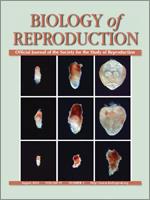In the present study, we identify and describe an obese phenotype in mice as a long-term consequence of a suboptimal in vitro culture that resulted from the addition of fetal calf serum (FCS) into the culture medium. Mice produced with FCS displayed a high mortality rate (approximately 55% versus 15% in control mice within 20 mo) and increased sensitivity to the development of obesity in adulthood when fed either a standard or a high-fat diet. These mice developed hyperplastic obesity that was characterized by a significant expansion of the fat pads (approximately 25% and 32% higher body weight in male and female mice over controls, respectively) with unchanged adipocyte size. We observed a sexual dimorphism in the development of obesity in the mice produced with FCS. Whereas the female mice displayed hypertension, hyperleptinemia, and fatty liver, the male mice only displayed glucose intolerance. The mRNA expression of metabolically relevant genes in the adipose tissue was also affected. The males produced with FCS expressed higher mRNA levels of the genes that activate fatty acid oxidation (peroxisome proliferator-activated receptor alpha [Ppara, PPARalpha] and acyl-CoA oxidase 1 [Acox1, ACOX1]) and thermogenesis (uncoupling protein 1 [Ucp1, UCP1]), which may counteract the metabolic phenotype. Conversely, the females produced with FCS generally expressed lower levels of these metabolic genes. In the females, the obese phenotype was associated with inhibition of the lipogenic pathway (peroxisome proliferator-activated receptor gamma [Pparg, PPARgamma] and fatty acid synthase [Fasn, FAS]), indicating a saturation of the storage capacity of the adipose tissue. Overall, our data indicate that the exposure to suboptimal in vitro culture conditions can lead to the sexually dimorphic development of obesity in adulthood.
How to translate text using browser tools
11 June 2014
Hyperplastic Obesity and Liver Steatosis as Long-Term Consequences of Suboptimal In Vitro Culture of Mouse Embryos
Antonia Serrano,
Juan M. Decara,
Raúl Fernández-González,
Angela P. López-Cardona,
Francisco J. Pavón,
Laura Orio,
Francisco Alen,
Alfonso Gutiérrez-Adán,
Fernando Rodríguez de Fonseca
ACCESS THE FULL ARTICLE

Biology of Reproduction
Vol. 91 • No. 2
August 2014
Vol. 91 • No. 2
August 2014
development
embryos
fatty liver
in vitro culture
mice
obesity




